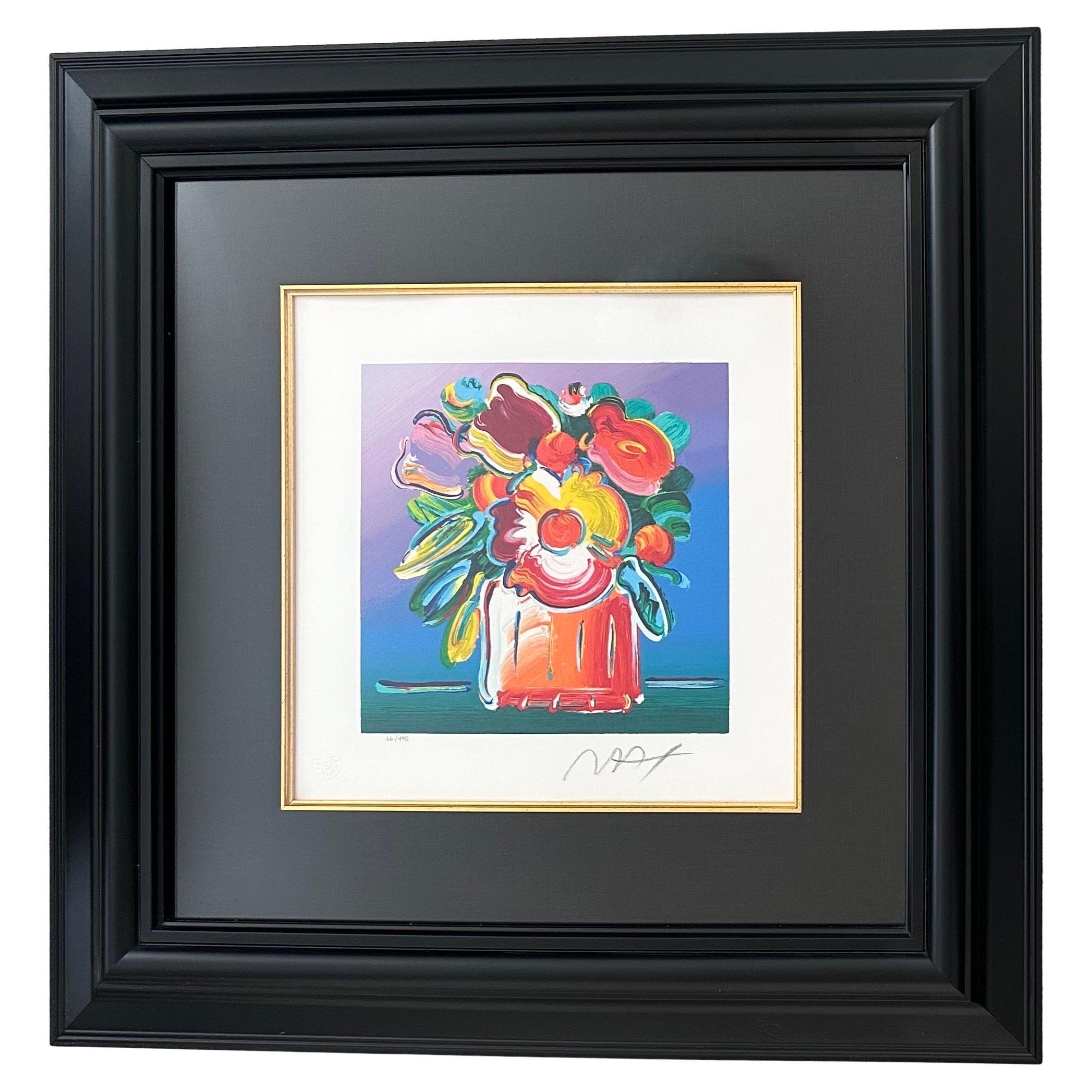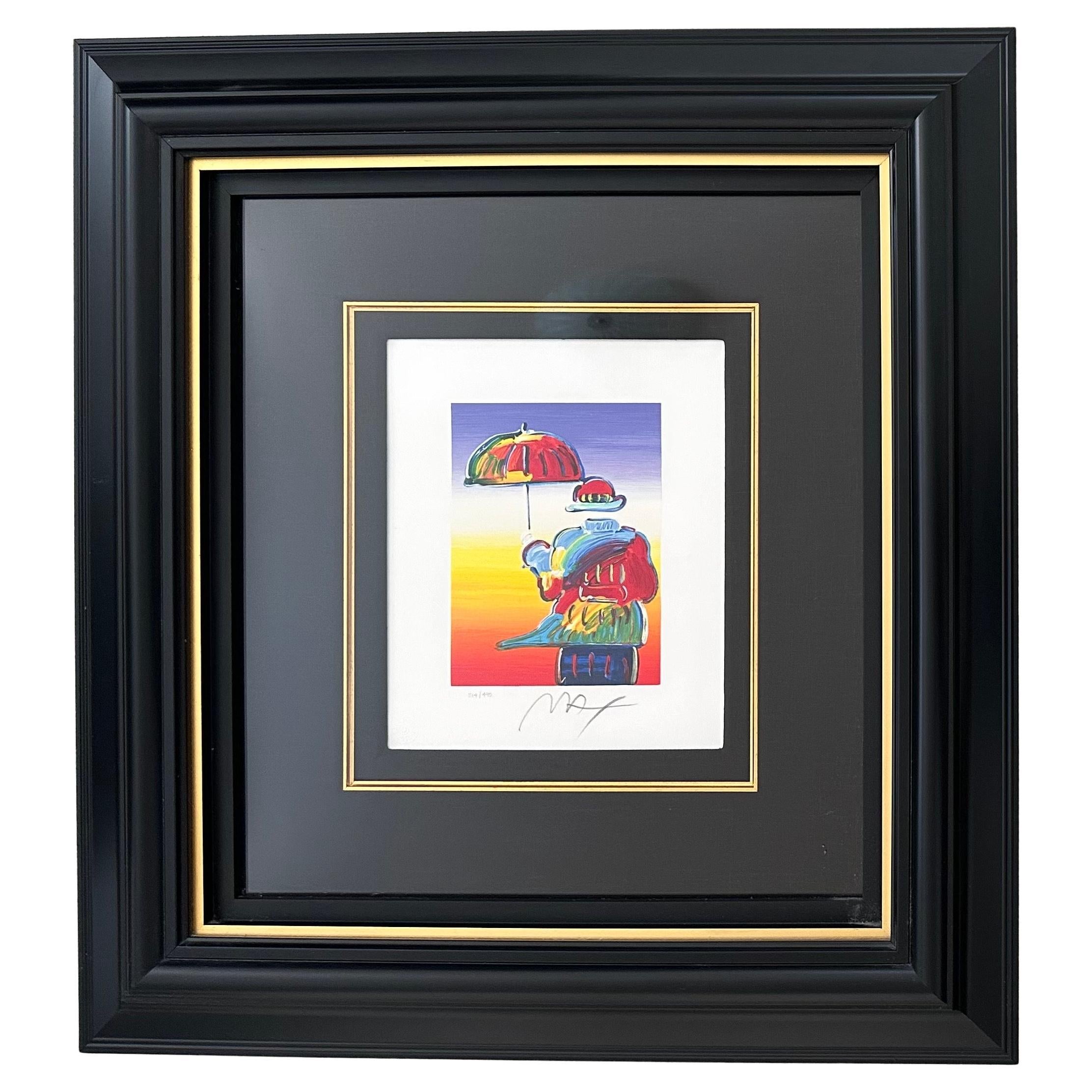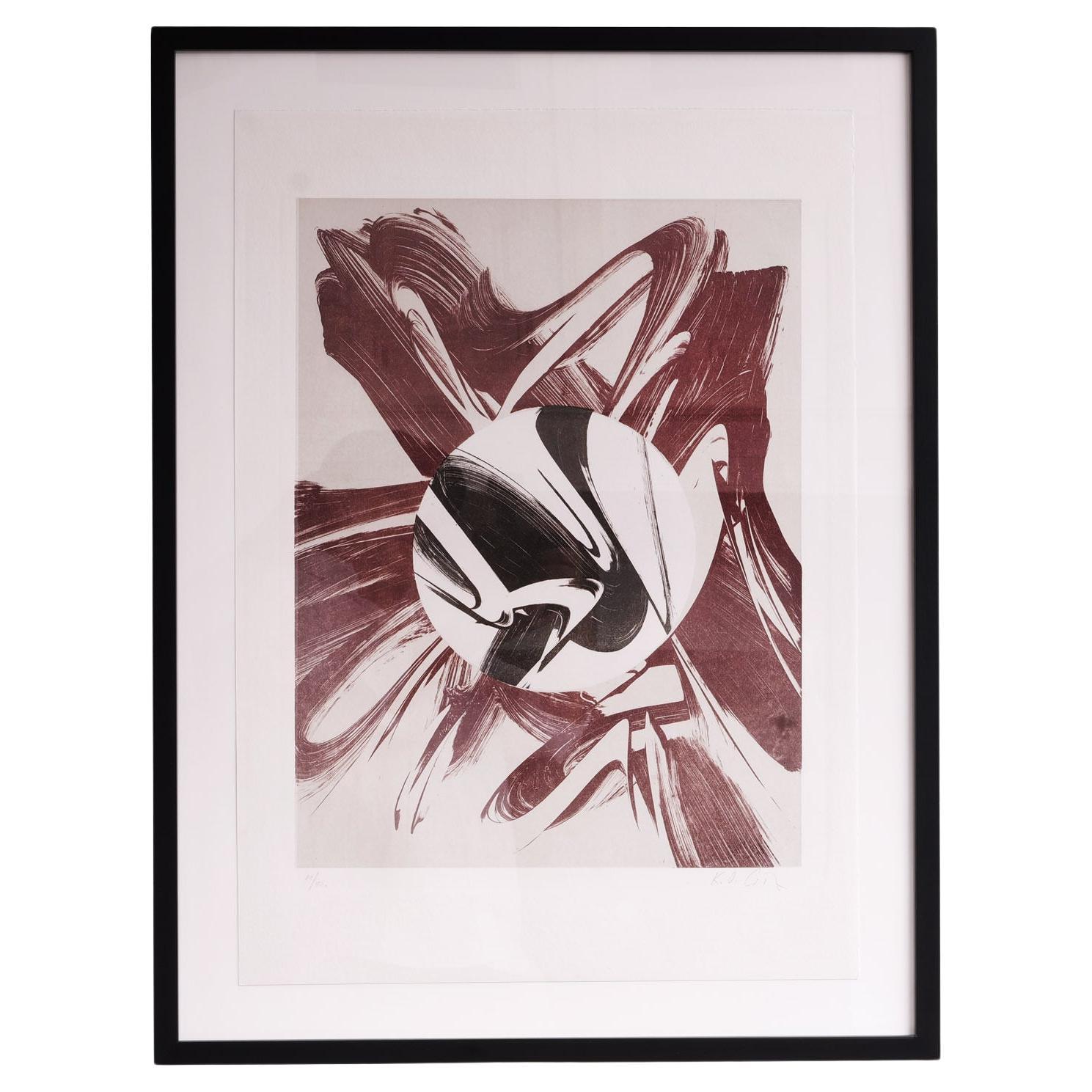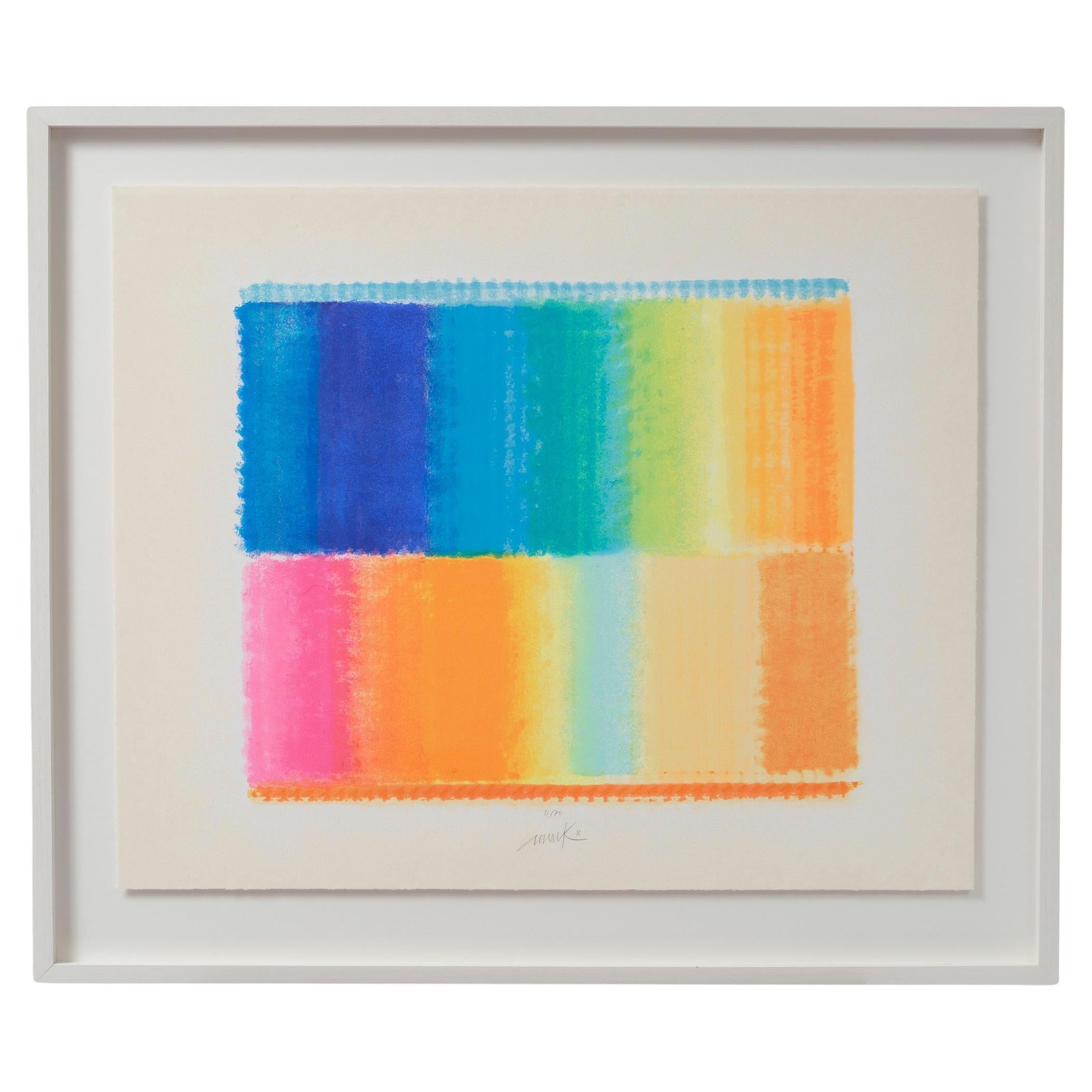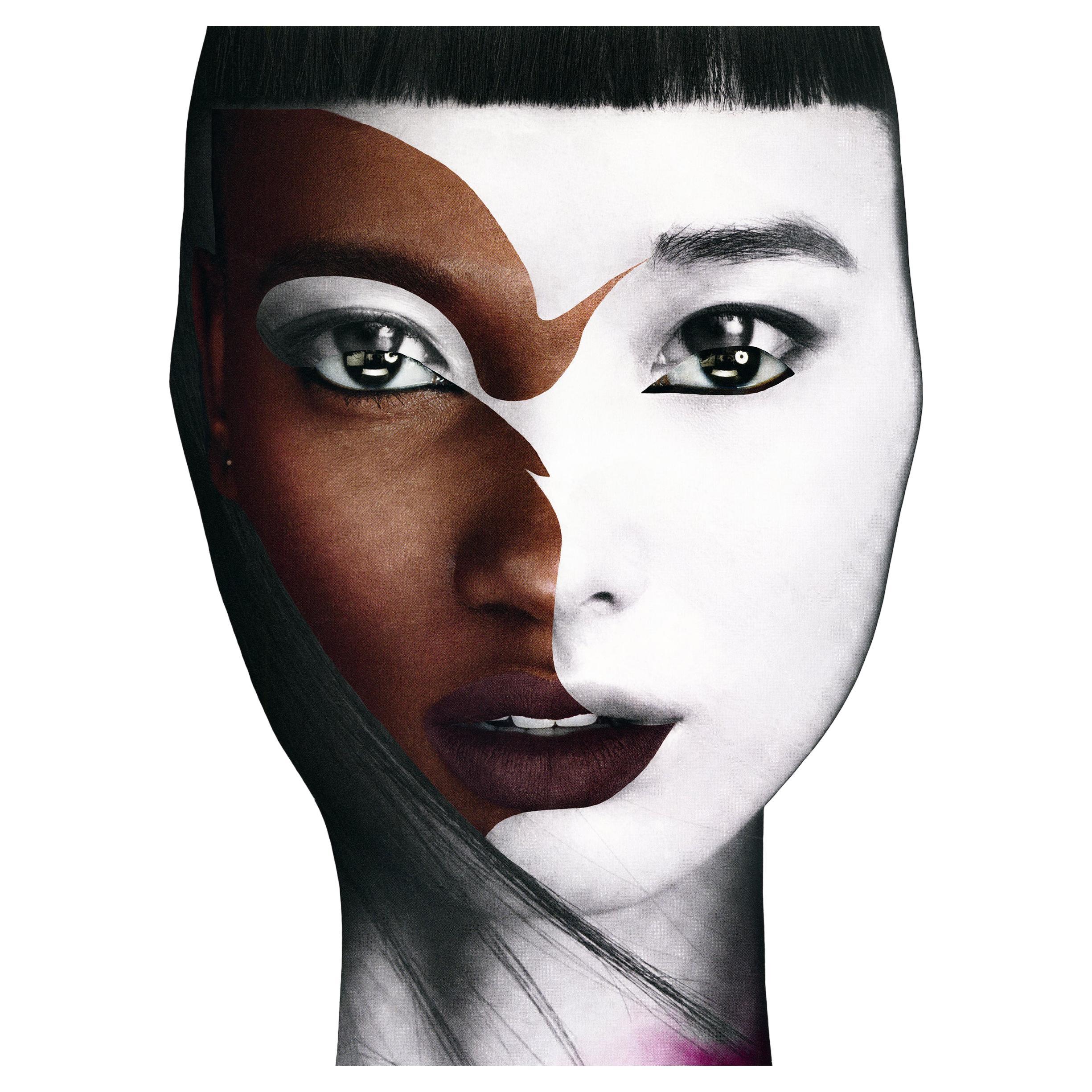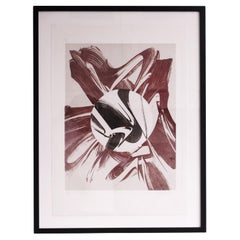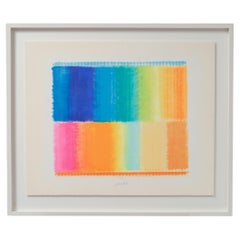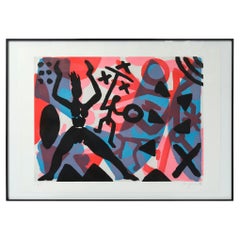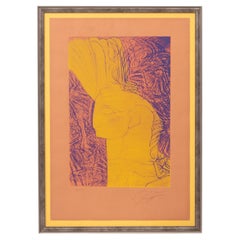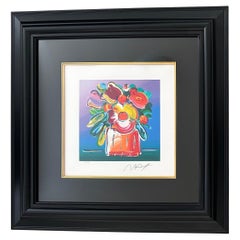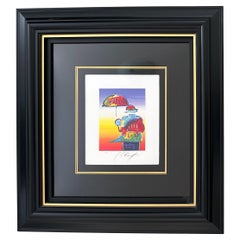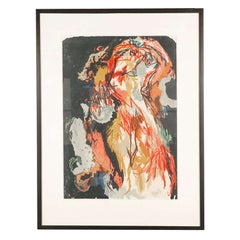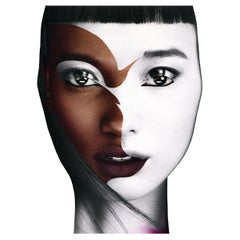Items Similar to Georg Karl Pfahler “untitled” Color silkscreen on wove paper 1989
Want more images or videos?
Request additional images or videos from the seller
1 of 5
Georg Karl Pfahler “untitled” Color silkscreen on wove paper 1989
About the Item
Georg Karl Pfahler (1926 - 2002)
“untitled”
Color silkscreen on wove paper, versa signed, numbered and dated by hand
Creation 1989
EX. 23/50
framed behind glass
Dimensions:
70 x 70 cm
Georg Karl Pfahler is considered the only important representative of the Hard Edge in Germany; he was a guest at the Biennales in Venice and São Paolo, taught in Nuremberg and Salzburg and was awarded numerous prizes.
Georg Karl Pfahler was born on October 8, 1926 in Emetzheim, Bavaria. He spent his childhood and youth on his parents' farm, far away from any art. Nevertheless, he loved painting and drawing from an early age and cultivated it intensively as a childhood pastime. However, Georg Karl Pfahler only received the impetus to study art in 1948 when he met students from the Nuremberg Art Academy and accepted their invitation. His parents, good but simple country folk, had no interest in their son's newly awakened passion, and the young man was also met with incomprehension in his home village. However, Georg Karl Pfahler did not let this put him off, but attended the Academy of Fine Arts in Nuremberg for two years, where he came into contact with original art for the first time and became acquainted with the works of Marc Chagall and Paul Klee. After two semesters, he moved to Stuttgart to study under Willi Baumeister, Gerhard Gollwitzer, Manfred Henninger and Karl Hils. Baumeister in particular had a great influence on Pfahler and was revered by him as a teacher and role model.
Georg Karl Pfahler first worked with colorful ceramics during his studies in Stuttgart, an experience that helped him to develop his special sense for simple forms and the “unity of color and space”. The artist's early paintings, created in 1955, still bear a strong resemblance to the first works of his teacher Baumeister. Soon afterwards, Pfahler became interested in the color field painting of the American Barnett Newman, and also got to know him personally, but distanced himself from his metaphysical spaces. Instead, he showed an interest in the representational presence of color and surface. Georg Karl Pfahler clarified his understanding of color as a material object in its own right through an intentional occasional shimmering through of the white background - a boundary thus becomes visible between the color as the depicted and the canvas as the foundation; color form and image carrier should not be blurred into a whole. Georg Karl Pfahler's preoccupation with Informel reached a climax when he founded Group 11 together with Attila Biró, Friedrich Sieber and Günther C. Kirchberger, an artists' association dedicated to Action Painting and Informel.
After an extensive study trip through Europe had introduced him to famous artists such as Alberto Giacometti, Karl Otto Götz, Marino Marini, Cy Twombly, Emil Schumacher and Gerhard Hoehme, Pfahler met Lawrence Allowey in London, who opened the door to a new understanding of art for him. His contact with the works of Jewish artists who had not wanted to exhibit in Germany for political reasons ultimately led him away from Art Informel and towards his “Formativ” series, which was characterized by an ever greater reduction to color and its references. By the early 1960s, Georg Karl Pfahler had finally arrived at the so-called Hard Edge and was the only German representative of this original American style to achieve international fame. For the Council of Elders of the German Bundestag, he designed the interior of the chamber in the style of his famous “Espan” paintings.
Georg Karl Pfahler died on January 6, 2002 in Weißenburg-Emetzheim.
- Dimensions:Height: 27.56 in (70 cm)Width: 27.56 in (70 cm)Depth: 1.19 in (3 cm)
- Style:Modern (Of the Period)
- Materials and Techniques:
- Place of Origin:
- Period:1980-1989
- Date of Manufacture:1989
- Condition:Wear consistent with age and use.
- Seller Location:Münster, DE
- Reference Number:1stDibs: LU9172244229972
About the Seller
5.0
Recognized Seller
These prestigious sellers are industry leaders and represent the highest echelon for item quality and design.
Established in 2000
1stDibs seller since 2023
- ShippingRetrieving quote...Shipping from: Münster, Germany
- Return Policy
Authenticity Guarantee
In the unlikely event there’s an issue with an item’s authenticity, contact us within 1 year for a full refund. DetailsMoney-Back Guarantee
If your item is not as described, is damaged in transit, or does not arrive, contact us within 7 days for a full refund. Details24-Hour Cancellation
You have a 24-hour grace period in which to reconsider your purchase, with no questions asked.Vetted Professional Sellers
Our world-class sellers must adhere to strict standards for service and quality, maintaining the integrity of our listings.Price-Match Guarantee
If you find that a seller listed the same item for a lower price elsewhere, we’ll match it.Trusted Global Delivery
Our best-in-class carrier network provides specialized shipping options worldwide, including custom delivery.More From This Seller
View AllKarl Otto Götz color lithograph untitled 1967
Located in Münster, DE
Karl Otto Götz color lithograph
1.450,00 € incl. VAT
Karl Otto Götz (1914 Aachen - 2017 Wolfenacker)
Color lithograph "untitled", signed and dated, created 1967, framed behind glass
...
Category
Vintage 1960s German Modern Contemporary Art
Materials
Paper
Heinz Mack (*1931 Lollar) “untitled” Color silkscreen, 2013
Located in Münster, DE
Heinz Mack (*1931 Lollar)
“untitled”
Created in 2013
Color silkscreen on wove paper, signed, numbered and dated by hand
EX. 31/70
framed behind museum glass
Dimensions:
She...
Category
2010s German Modern Contemporary Art
Materials
Paint, Paper
A.R. Penck Color etching, “untitled”, 1990s
By A.R. Penck (Ralf Winkler)
Located in Münster, DE
A.R. Penck (1939 Dresden - 2017 Zurich)
Color etching, “untitled”, created in the 1990s, signed and numbered by hand, ed. 35, copy 32/35
Sheet size: 65.5 x 89.5 cm
Frame size: ...
Category
1990s German Modern Contemporary Art
Materials
Paint, Paper
Ernst Fuchs (1930 - 2015) "Head of a cherub", created in 1982 Color silkscreen
By Ernst Fuchs
Located in Münster, DE
Ernst Fuchs (1930 - 2015)
"Head of a cherub", created in 1982
Color silkscreen, ed. 200 pieces, signed and numbered
Dimensions 67.7 cm x 45 cm
Ernst Fuchs was born on February 13, 1930 in Vienna Ottakring as the only child of Maximilian and Leopoldine Fuchs; his father was of Jewish descent, which is why his grandfather and father emigrated to the USA and Shanghai in 1938 after the annexation of Austria by the Third Reich. To protect little Ernst from anti-Semitic hostility, it was decided to baptize him according to the Roman Catholic rite in 1942. The 12-year-old Ernst Fuchs was allowed to choose his own baptismal name and chose Ernst Peter Paul, in honor of the painter Peter Paul Rubens, whom he admired at the time. Around the same time, his godmother's brother, the painter and restorer Alois Schiemann, taught him the basics of drawing and painting. Until the age of 15, he attended the St. Anna painting school in Vienna, where he was taught sculpture and painting by Emmy Steinböck and Fritz Fröhlich.
After the war, Ernst Fuchs was finally able to take up his longed-for studies at the Academy of Fine Arts in Vienna, which he had previously been denied for racist reasons. His teachers were first Robin Andersen, then Albert Paris Gütersloh. While still a student, he was allowed to hold his first solo exhibition in Paris in 1949, and soon afterwards, in 1950, he also moved to the French capital. Ernst Fuchst traveled through Europe and the USA for six years before taking an extended stay at the Dormition Monastery on Mount Zion in Israel in 1957 to study icon painting in depth. He finally returned to Vienna in 1962, where he founded the Vienna School of Fantastic Realism with former fellow students, of which he himself was to become the most important representative. The early years in particular were characterized by a strong surrealism; mythical and religious symbols in particular appealed to Ernst Fuchs and permeated his work. Later, Fuchs turned increasingly to Mannerism.
Ernst Fuchs' artistic spectrum broadened over the years: he sang and recorded various albums, which, like the majority of his paintings, were inspired by mystical motifs, and he designed stage sets for such famous operas as Wagner's Parsifal and Lohengrin or Mozart's Die Zauberflöte. Ernst Fuchs also wrote philosophical treatises. He repeatedly collaborated with other artists, including the musicians Klaus Schulze...
Category
Vintage 1980s Austrian Modern Contemporary Art
Materials
Paper
Ernst Fuchs (1930 - 2015) "Head of a cherub", created in 1982 Color silkscreen
By Ernst Fuchs
Located in Münster, DE
Ernst Fuchs (1930 - 2015)
"Head of a cherub", created in 1982
Color silkscreen, ed. 200 pieces, signed and numbered
Dimensions 67.7 cm x 45 cm
Ernst Fuchs was born on February 13, 1930 in Vienna Ottakring as the only child of Maximilian and Leopoldine Fuchs; his father was of Jewish descent, which is why his grandfather and father emigrated to the USA and Shanghai in 1938 after the annexation of Austria by the Third Reich. To protect little Ernst from anti-Semitic hostility, it was decided to baptize him according to the Roman Catholic rite in 1942. The 12-year-old Ernst Fuchs was allowed to choose his own baptismal name and chose Ernst Peter Paul, in honor of the painter Peter Paul Rubens, whom he admired at the time. Around the same time, his godmother's brother, the painter and restorer Alois Schiemann, taught him the basics of drawing and painting. Until the age of 15, he attended the St. Anna painting school in Vienna, where he was taught sculpture and painting by Emmy Steinböck and Fritz Fröhlich.
After the war, Ernst Fuchs was finally able to take up his longed-for studies at the Academy of Fine Arts in Vienna, which he had previously been denied for racist reasons. His teachers were first Robin Andersen, then Albert Paris Gütersloh. While still a student, he was allowed to hold his first solo exhibition in Paris in 1949, and soon afterwards, in 1950, he also moved to the French capital. Ernst Fuchst traveled through Europe and the USA for six years before taking an extended stay at the Dormition Monastery on Mount Zion in Israel in 1957 to study icon painting in depth. He finally returned to Vienna in 1962, where he founded the Vienna School of Fantastic Realism with former fellow students, of which he himself was to become the most important representative. The early years in particular were characterized by a strong surrealism; mythical and religious symbols in particular appealed to Ernst Fuchs and permeated his work. Later, Fuchs turned increasingly to Mannerism.
Ernst Fuchs' artistic spectrum broadened over the years: he sang and recorded various albums, which, like the majority of his paintings, were inspired by mystical motifs, and he designed stage sets for such famous operas as Wagner's Parsifal and Lohengrin or Mozart's Die Zauberflöte. Ernst Fuchs also wrote philosophical treatises. He repeatedly collaborated with other artists, including the musicians Klaus Schulze...
Category
Vintage 1980s Austrian Modern Contemporary Art
Materials
Paper
Heinrich Siepmann 1986 Collage and Gouache on paper
Located in Münster, DE
Heinrich Siepmann (1904-2002 Mülheim)
Collage, paper and gouache on cardboard, signed and dated by hand, created 1986
Dimensions: 45 x 48.5 cm
Heinrich Siepmann belonged to the se...
Category
Vintage 1980s German Modern Contemporary Art
Materials
Paint, Paper
You May Also Like
"Abstract Flowers I" Serigraph on Wove Paper by Peter Max
By Peter Max
Located in San Diego, CA
"Abstract Flowers I" serigraph on wove paper by Peter Max, circa 2017. The piece is a unique work with very vibrant and bright colors and is hand signed "Max" in lower right hand co...
Category
21st Century and Contemporary American Expressionist Contemporary Art
Materials
Acrylic, Wood
"Umbrella Man" Serigraph on Wove Paper by Peter Max
By Peter Max
Located in San Diego, CA
Limited edition serigraph on wove paper (314 of 495)
"Peter Max 2015" embossed seal in lower left
Colors are very vibrant and bright
Hand signed "Max" in pencil in lower right hand c...
Category
21st Century and Contemporary American Expressionist Contemporary Art
Materials
Other
Karel Appel Color Lithograph on Paper
By Karel Appel
Located in Van Nuys, CA
Karel Appel color lithograph on paper, artist proof, female figure.
Image size, 20" W x 28" H.
Category
Vintage 1960s Dutch Contemporary Art
Donovan G Davis Untitled 2023 Photo Collage on paper
By Donovan Davis
Located in Toronto, ON
Donovan Davis is a Canadian based artist currently residing in Toronto. He has over two decades dedicated to deconstructing and reconstructing photo based images.
His stunning photo...
Category
2010s Canadian Modern Contemporary Art
Materials
Paper
"Rush Light", 1989 Framed Pastel on Paper by Jim Waid, Companion Available
Located in New York, NY
In "Rush Light," 1989, artist Jim Waid through his mastery of pastel on paper, reflects a microcosmic view of nature that would otherwise be purely abstract without the sporadic depi...
Category
Vintage 1980s American Contemporary Art
Materials
Other
Larry Zox Untitled Pair of 1970s Silkscreens
By Larry Zox
Located in Water Mill, NY
Pair of Larry Zox silksceens signed and each numbered 54/75 giltwood frames
size of top silkscreen H 28.75 x W24 x W 1.5.
Category
Vintage 1970s American Contemporary Art
$1,600 / item
